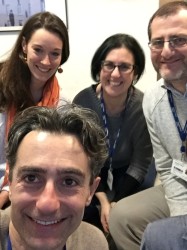BibTex format
@article{Hervera:2019:10.15252/embj.2018101032,
author = {Hervera, A and Zhou, L and Palmisano, I and McLachlan, E and Kong, G and Hutson, TH and Danzi, MC and Lemmon, VP and Bixby, JL and Matamoros-Angles, A and Forsberg, K and De, Virgiliis F and Matheos, DP and Kwapis, J and Wood, MA and Puttagunta, R and Del, Río JA and Di, Giovanni S},
doi = {10.15252/embj.2018101032},
journal = {EMBO Journal},
title = {PP4-dependent HDAC3 dephosphorylation discriminates between axonal regeneration and regenerative failure},
url = {http://dx.doi.org/10.15252/embj.2018101032},
volume = {38},
year = {2019}
}

